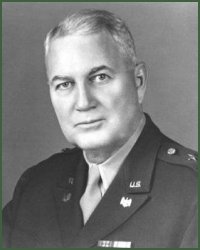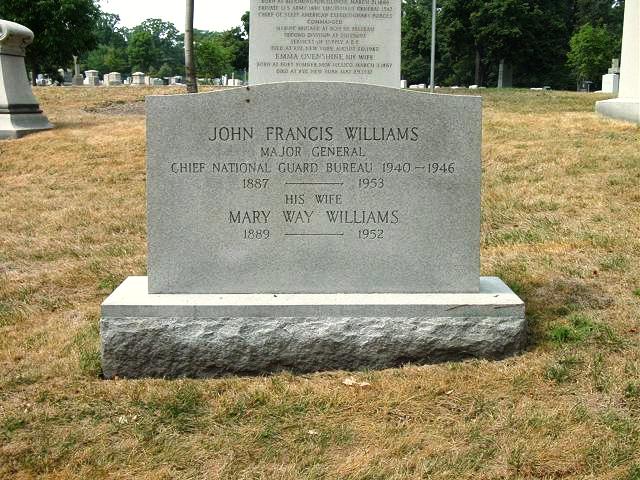John Williams enlisted in the Missouri National Guard as a Private on March 18, 1903 and was honorably discharged on September 1, 1904.
General Williams was appointed a First Lieutenant, Infantry, Missouri National Guard on April 2, 1917. Ordered into federal service during the First World War as Adjutant, 128th Machine Gun Battalion, 35th Division, August 1917-September 1919. Promoted to Major, Coast Artillery on June 8, 1921. Appointed Colonel and Commander, 128th Field Artillery on April 21, 1923.
Promoted to Major General and Chief, National Guard Bureau in 1940. He served as Chief for the duration of the Second World War and immediately after the war during the initial reorganization of the National Guard.
MAJOR GENERAL WILLIAMS, LED NATIONAL GUARD BUREAU
PASADENA, California, May 30, 1953 – Major General John F. Williams, Chief of the National Guard with headquarters in Washington, D.C., during World War II, died of cancer in a hospital here yesterday. He was 66 years old.
General Williams, who organized the first mechanized regiment in the Army, was also a veteran of World War I. He retired in 1946 and had been living at Laguna since then.
During his career he had served as Colonel of the 128th Field Artillery in the Missouri National Guard. He was graduated fro the University of Missouri School of Journalism in 1911 and later worked as a reporter on the Kansas City Star and was editor of the Joplin, Missouri, News-Herald.
The General, a widower, leaves two daughters, Mrs. Alexander H. Gaal of San Marino, California, and Mrs. James M. Clark of Cincinnati, and two stepsons, Colonel M. W. Caffee of Eau Claire, Wisconsin, and Master Sergeant W. K. Caffee, now serving with the Army in Newfoundland.
NOTE: His wife was the former sister-in-law of Arthur Gill Chaffee, Lieutenant, United States Navy.
Michael Robert Patterson was born in Arlington and is the son of a former officer of the US Army. So it was no wonder that sooner or later his interests drew him to American history and especially to American military history. Many of his articles can be found on renowned portals like the New York Times, Washingtonpost or Wikipedia.
Reviewed by: Michael Howard


